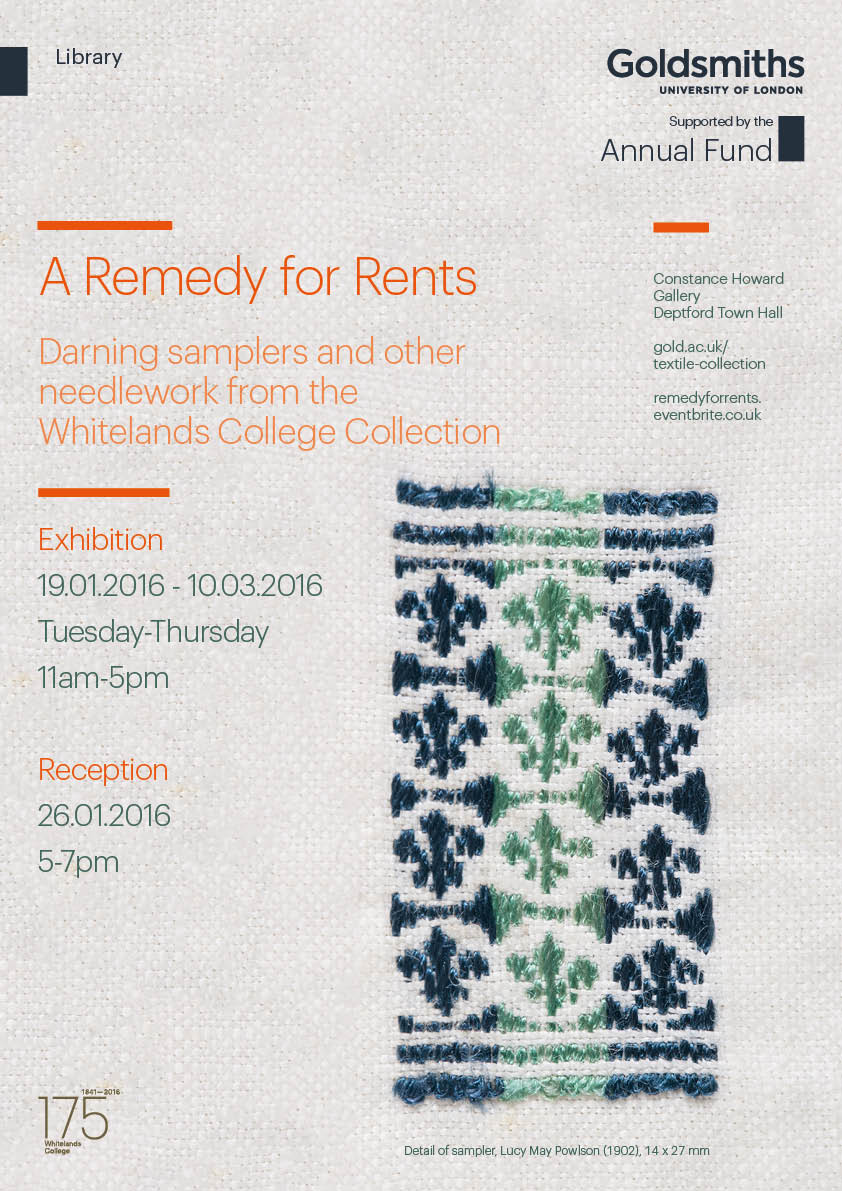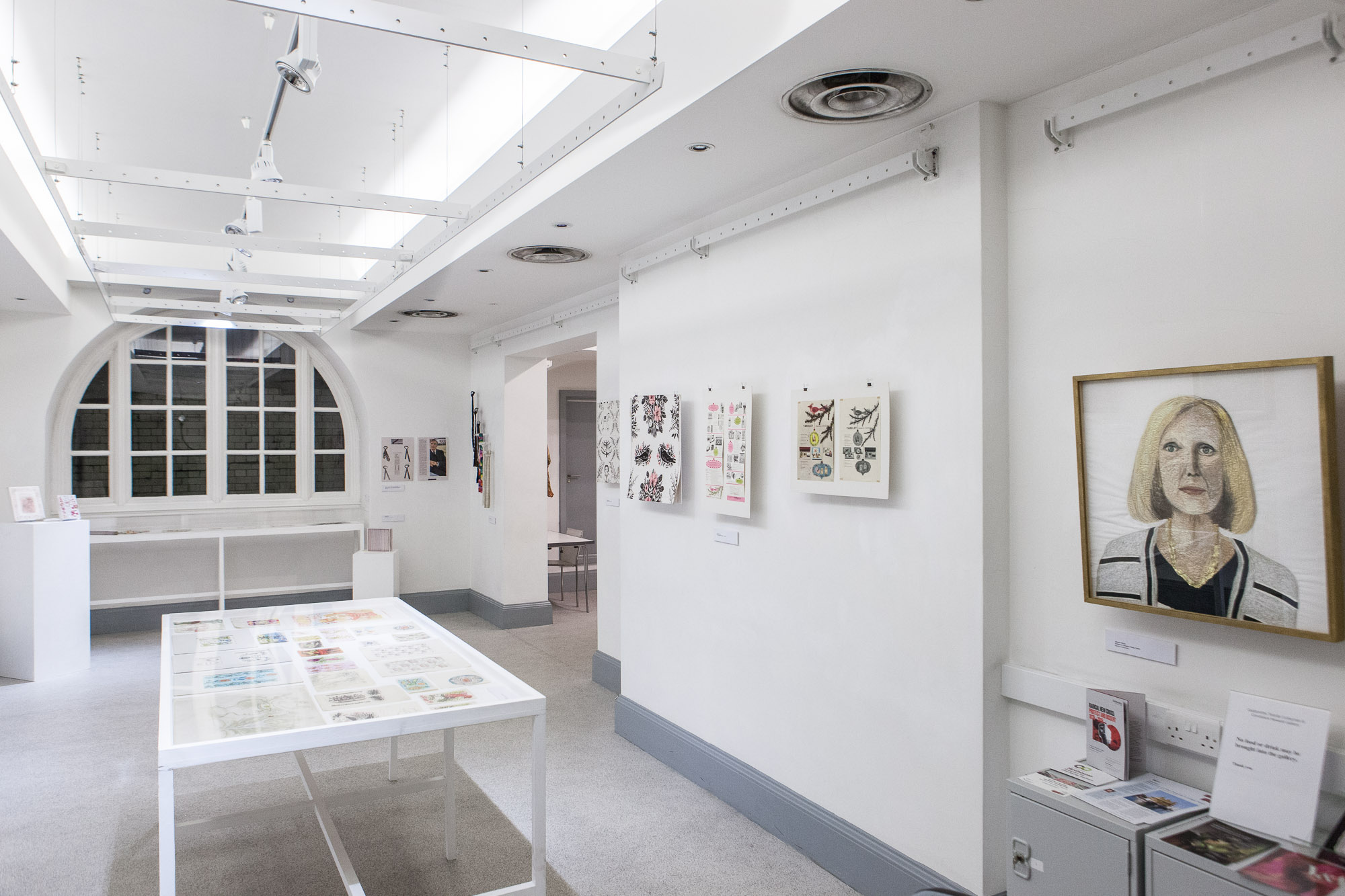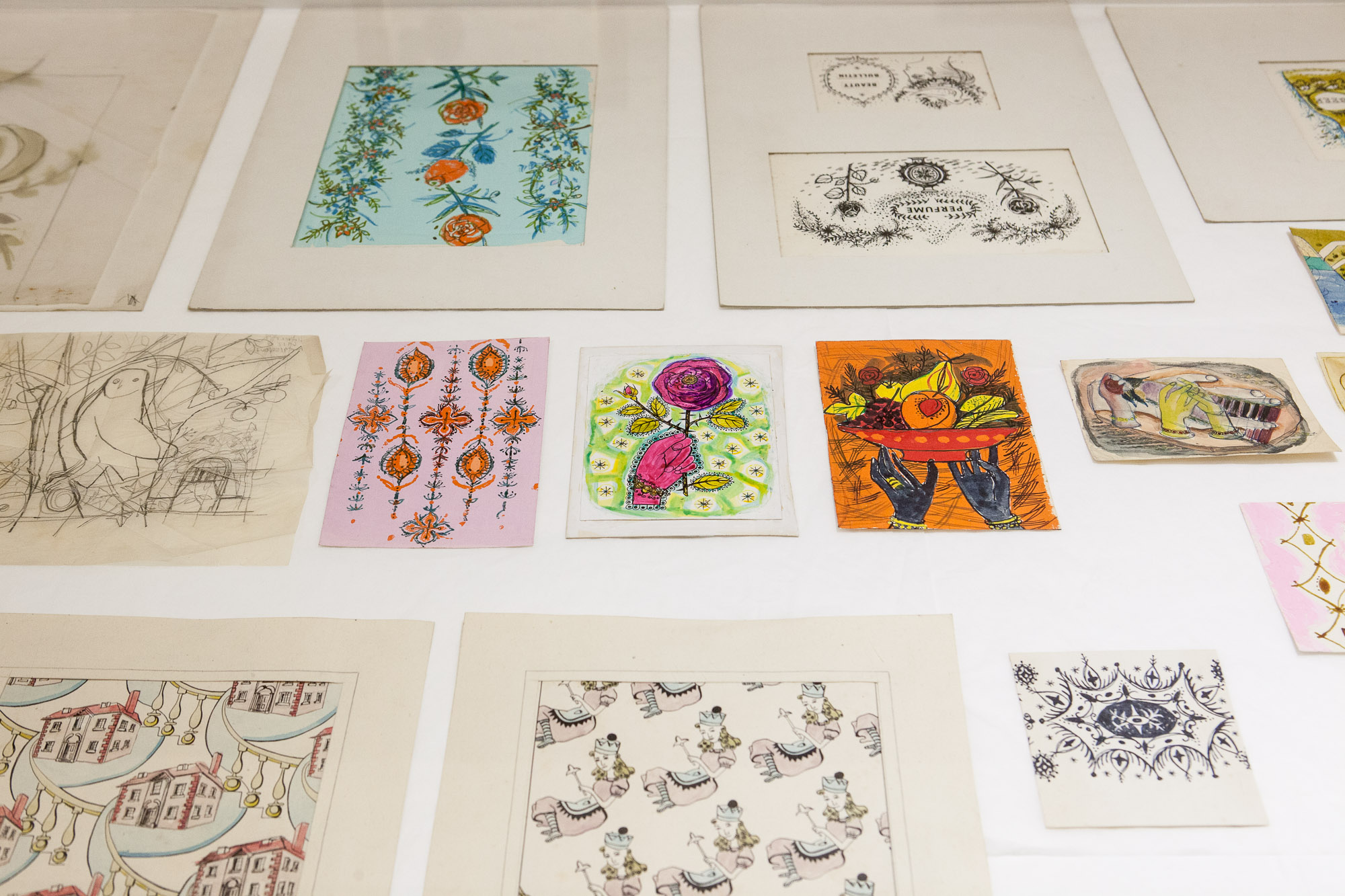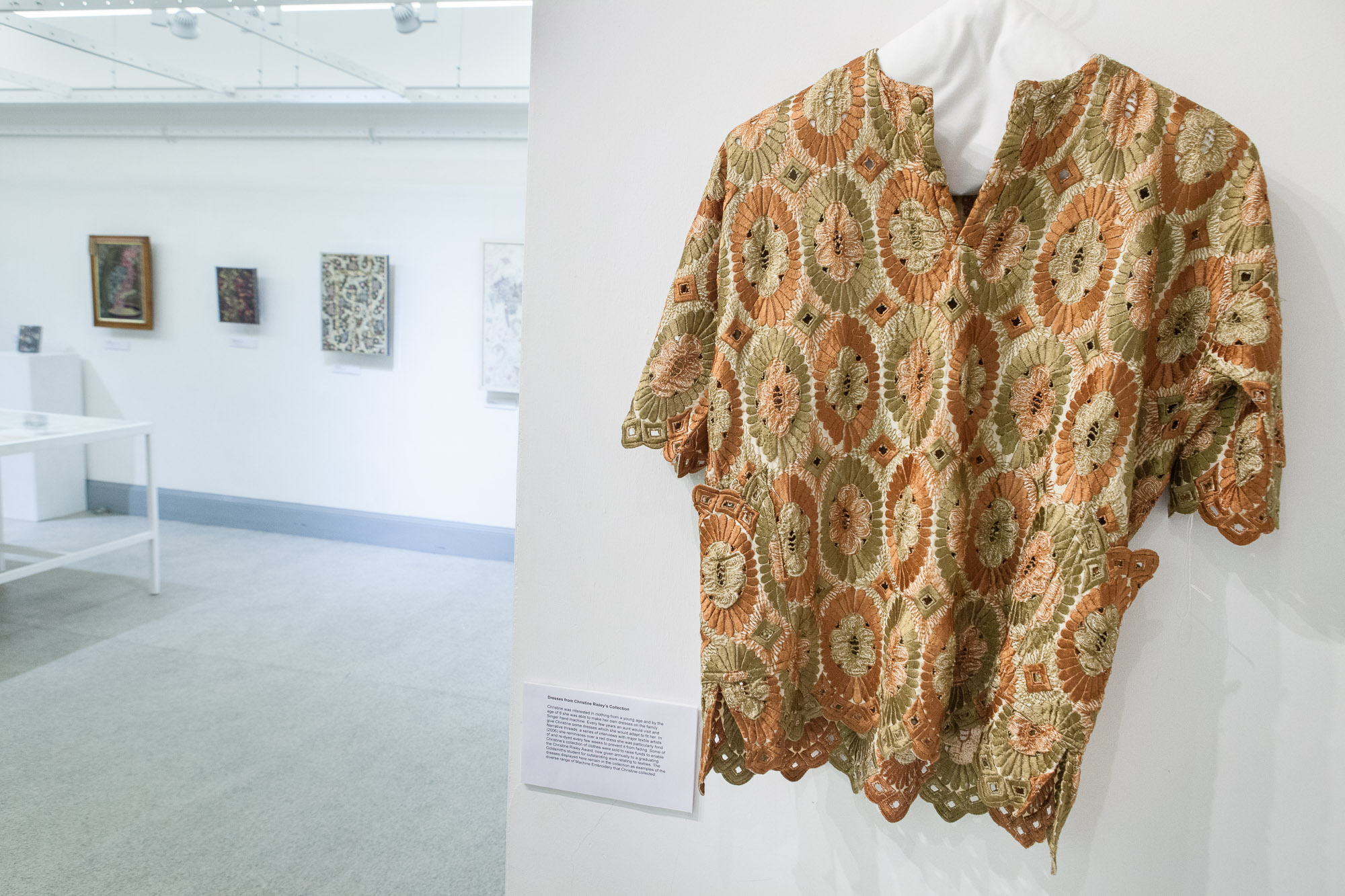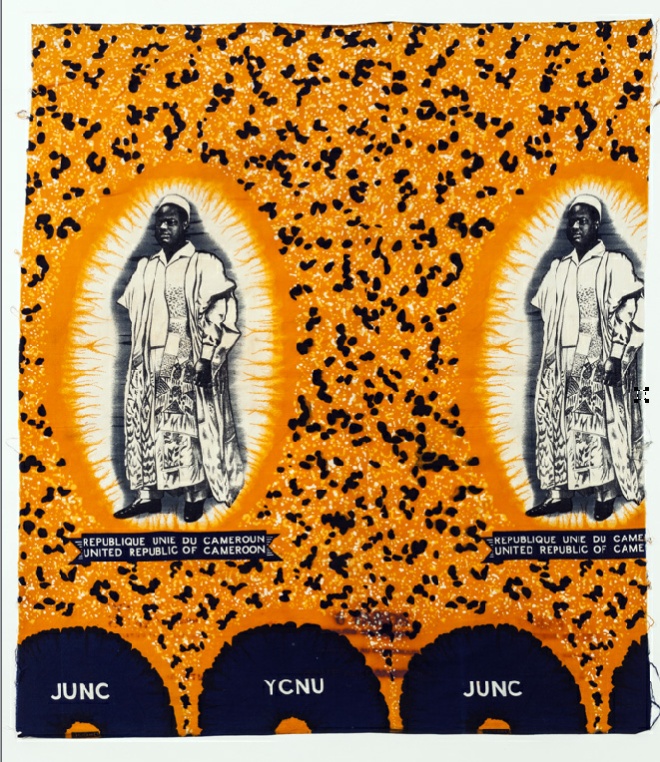
Goldsmiths Textile Collection (part of Special Collections & Archives) houses an array of eye catching & intriguing fabric based objects. From embroideries to cultural significant fashion garments, many of these items have been collected over time with the intention of inspiring creative and academic imaginations from a variety of disciplines. As this blog post will attempt to explore, many of the objects housed within the Textile Collection have a rich cultural and social history that extends far beyond the first impression.
A problem that many academic researchers will no doubt be familiar with is attempting to analyse the authentic story at the heart of a matter. Many an academic have scratched their heads upon finding that deeper inspection of a subject sometimes ends up complicating the matter at hand rather than resolving it. This sort of quandary is an everyday occurrence during research, and the objects based in the Textile Collection are no less exempt from such issues around history and identity. Such is the case for the subject of this blog post, a highly colourful waxed cotton print from Cameroon. This particular object gets quite significant amount of attention here in the Textile Collection, thanks in no small part to an attractive and somewhat psychedelic colour scheme, with a fiery orange hue that evokes vivid sensations of warmer climates south of the equator. Amongst the blazing backdrop is a highly presidential looking figure with the text ‘Republique Unie Du Cameroon/United Republic of Cameroon’, ‘JCNU’ and ‘YCNU’ sitting below it. A small insignia of ‘CICAM’ along the borders of the cloth gives some indication as to who the manufacturers might have been, or perhaps the organisation who might have commissioned production of the cloth.

As far as actual historical detail goes, this is where things get a bit more puzzling for the enigmatic wax cloth. As is sometimes the case with objects donated to archives, we don’t actually have much knowledge of the object’s provenance beyond that. So visual information of the cloth is all we initially have to go on. Crucially, we didn’t know who the presidential figure might be, the year the cloth was made or what it was specifically commemorating. The amount of gaps in the cloth’s story leaves the exact intention somewhat ambiguous, so equal measures of luck, intuition and detective work would be needed in order to ascertain more. Luckily, there is a lot of information on the cloth that can be garnered with the naked eye, and so this was as good a place as any from which to proceed.
Firstly we could arguably identify the cloth as being from Cameroon, as it bears the commemorative text of United Republic of Cameroon – the functioning government for the nation since 1972. Researching the cloth’s manufacturer, CICAM (Cotonnière industrielle du Cameroun), reveals it to be Cameroon’s national textiles company. This confirms both the origin and stately significance of it as an historical object. The cloth is likely commemorative in nature, as it seems to be celebrating both a public figure and an institution from Cameroon. These particular details seemed like a worthwhile place from which to proceed an investigation.
An internet search of ‘Cameroon commemorative cloth’ reveals that cloth making is a popular activity across the sub-Saharan continent, and has a particularly strong following in Cameroon. According to Tommy Miles from tomathon.com, they are referred to interchangeably as Wax Prints, Pagnes or Batiks. As he explains:
I’m using the French term ‘Pagne‘ as sometimes they are called “Pagnes commeratifs”. Coming from Portuguese, pagne really describes the cut of cloth not the patterns or content. It has come to be one of several terms used to denote these brightly colored, intricately designed, and socially significant cotton fabrics produced and worldwide, and especially throughout tropical Africa. In West Africa, these tend to be “Fancy” (i.e. cheaper, one sided) mass produced “roller” prints on cotton. Also known as Wax prints (like the more expensive double sided Waxes, by companies like Vlisco), and occasionally as “Batiks” (which they are not), the names come from the production process. Batiks use hand painted wax to mask off areas from dye. Most roller prints use resins to achieve this effect, but retain the vein like “crinkles” characteristic of hand printed fabrics with wax fixer, a technique also known as starch resist or wax resist. Machine made, they feature repeating patterns rolled onto a long cotton cloth, usually 46 or 47 inches wide. The forms and design traditions are ubiquitous in West Africa. The slightly different “khanga” form of similar cotton fabrics is popular in East Africa and points south.
Tom’s description is useful in providing us with important information for our investigation. He provides detail into the elaborate creative processes that go into producing a commemorative cloth, as well as describing their cultural importance for establishing historical events.
Returning to the visual details of the cloth, it seemed necessary to examine other details so as to get further indications about whom the presidential figure previously described might be. The text of ‘JCNU’ and ‘YCNU’ seems to be politically significant to the design of the cloth. Searching through library catalogues, Churchill Ewumbue-Monono’s Youth and Nation-building in Cameroon (2009) holds some answers as to what these acronyms might represent. JCNU and YCNU interchangeably to refer to the youth wing of Cameroon’s National Union (CNU). The youth party was set up by the CNU’s first president, Ahmadou Ahidjo in 1966, so it’s possible he may be the figure depicted on the cloth.

Former & Current Presidents of Cameroon Ahmadou Ahidjo & Paul Biya
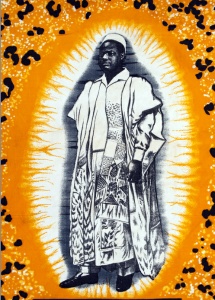
However, the image isn’t a clear match for the one on the cloth so we couldn’t be positive. Furthermore, the cloth seems relatively modern and colourful in comparison to others from Ahidjo’s presidency. However, his successor Paul Biya, could also possibly be the figure in the wax cloth (albeit without the ubiquitous moustache). Biya took the presidency of Cameroon under somewhat controversial circumstances and remains in control to present day. Despite being involved in various scandals throughout his presidency, Biya has expressed a commitment to the JCNU/YCNU. In 1984 Biya began the roll out of a brand new youth policy for Cameroon. This included a New Deal agreement geared towards getting the youth of Cameroon into employment. It’s highly possible that the cloth was manufactured around this period to commemorate Biya’s new hopes for the youth of Cameroon.
Unfortunately, this is as far the investigation into the wax cloth has been able to get. We are unable to provide an exact photo match with the image on the wax cloth, making identification and provenance problematic once more. On the other hand, a high volume amount of information has been pieced together using some highly disparate sources. This information has led to the accumulation of knowledge about a moment in Cameroon’s national history. By getting us to explore further into this particular moment in time, the CICAM wax cloth is very successful in its function as a commemorative object. It demonstrates that the process of research can be a highly enlightening experience in lots of unexpected ways, and that objects of inquiry can be transformative in their effect on reseachers.
If anyone has any more precise information on the Cameroon Commemorative Cloth then we would be very excited to hear from you, so we can add more to the origin story of this unique object. Alternatively you wanted to view the wax cloth or any of our other wide variety of items in person, then contact the Textile Collection at textiles@gold.ac.uk for more details. Opening times are Tuesday – Thursday, 11 – 5.00 pm.
By Jack Mulvaney
